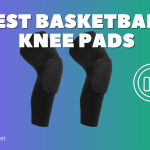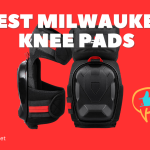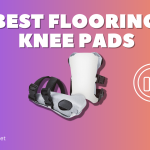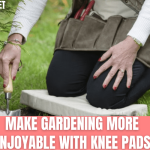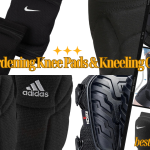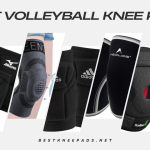If you’re a volleyball player, you know that knee pads are a must-have piece of equipment. They not only provide essential protection from falls and dives but also help you feel more confident on the court. However, knee pads can only do their job effectively if they fit correctly. In this section, we will discuss why proper-fitting knee pads are crucial for your performance and safety, and provide guidelines on how to achieve an optimal fit.
Key Takeaways:
- A well-fitted knee pad is essential for both performance and protection on the volleyball court.
- Poorly fitting knee pads can lead to discomfort, restricted movement, and may even cause injuries.
- Measuring your knee size, selecting the correct pad size, and adjusting the straps are crucial steps to ensure an optimal fit.
Understanding the Importance of a Proper Fit
When it comes to volleyball knee pads, having a proper fit is essential for several reasons. Firstly, an ill-fitting knee pad can cause discomfort, chafing, or irritation, which can affect your focus and performance on the court. Secondly, a poorly fitting knee pad can slip or move during games, leaving your knees unprotected and prone to injury. Lastly, a knee pad that fits correctly provides flexibility and ease of movement, allowing you to play to the best of your ability.
At the heart of it, a well-fitted knee pad is an essential piece of equipment that can significantly impact your volleyball experience. Whether you are a beginner or a seasoned player, it’s crucial to prioritize the fit of your knee pads to ensure optimal performance and protection.
Guidelines for Achieving an Optimal Fit
Now that we understand the importance of proper fitting volleyball knee pads, let’s dive into the practical steps you should follow to ensure your knee pads fit perfectly.
Step 1: Measure Your Knee Size
The first step in achieving a good fit is to measure your knee size. Simply take a measuring tape and wrap it around your knee cap, ensuring it’s snug but not too tight. Record the measurement in inches or centimeters, depending on the measuring tape used.
Step 2: Select the Correct Pad Size
Once you know your knee size, refer to the manufacturer’s size chart to select the appropriate pad size. Note that sizes may vary across brands, so always double-check the size chart before purchasing a knee pad.
When selecting the size, consider the thickness of the pad. A thicker pad will provide more protection but may be bulkier and restrict movement. Conversely, a thinner pad may be less protective but allow for more freedom of movement.
Step 3: Adjust the Straps for a Snug Yet Comfortable Fit
Adjust the pads’ straps to ensure a snug yet comfortable fit. The pads should be tight enough to stay in place but not so tight that they restrict circulation or cause discomfort.
Place the pads on your knees and fasten the straps firmly. You should be able to bend your knees and move freely without the pads shifting or slipping. Adjust the straps as needed until you achieve the perfect fit.
Remember to check the fit periodically throughout your game or practice session to ensure the pads continue to fit correctly.
By following these guidelines, you can achieve an optimal fit for your volleyball knee pads, providing you with the protection and comfort you need to perform at your best.
Signs of an Ill-Fitting Knee Pad
Wearing improperly fitting volleyball knee pads can do more harm than good. Not only can they be uncomfortable, but they can also lead to injuries and hinder your performance on the court. It’s essential to recognize the common signs of an ill-fitting knee pad to ensure that you’re wearing the right gear for your game.
The first sign of an ill-fitting knee pad is slippage. If your knee pad moves around while playing, it won’t provide the necessary protection, leaving your knees vulnerable to injury. A well-fitting knee pad should stay in place and not slide down or move around your leg.
Discomfort is also a significant indicator of an ill-fitting knee pad. If your knee pad is too tight, it can cause discomfort and cut off circulation. On the other hand, if the pad is too loose, it can cause chaffing and rubbing. A proper fit should be snug yet comfortable, providing adequate support and protection without causing any discomfort.
Restricted movement is another sign that your knee pad isn’t fitting correctly. If your knee pad is too tight or too loose, it can hinder your movement, making it difficult to maneuver on the court. This can limit your performance and make it hard to keep up with the game’s pace.
It’s crucial to recognize the signs of an ill-fitting knee pad and adjust your gear accordingly. Wearing the right gear can help prevent injuries and enhance your gameplay on the court.
Conclusion
In conclusion, properly fitting volleyball knee pads are crucial for both comfort and protection during gameplay. By following the guidelines we have provided in this article, you can ensure that your knee pads fit snugly, allowing you to focus on your game without any distractions or discomfort. Remember to measure your knee size, select the correct pad size, and adjust the straps for a snug yet comfortable fit.
Additionally, recognizing the signs of an ill-fitting knee pad is important to make any necessary adjustments. Signs such as slippage, discomfort, or restricted movement indicate that your knee pads are not fitting correctly, and it is important to address these issues before returning to the court.
A well-fitted knee pad is an essential piece of equipment that can greatly enhance your volleyball experience. Don’t underestimate the importance of finding the right fit for your knee pads. With proper fitting knee pads, you can focus on the game, rather than worrying about protection or discomfort.

